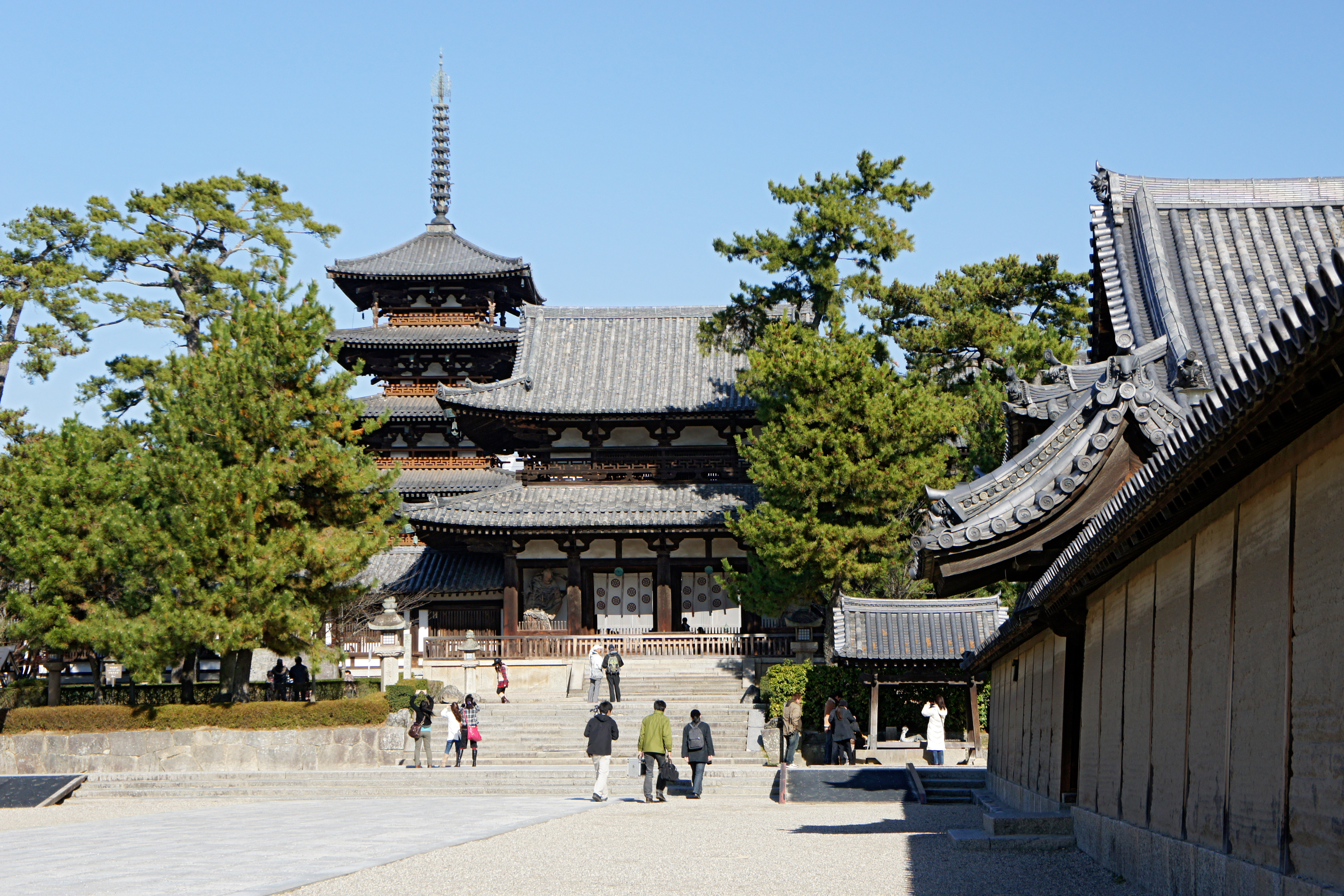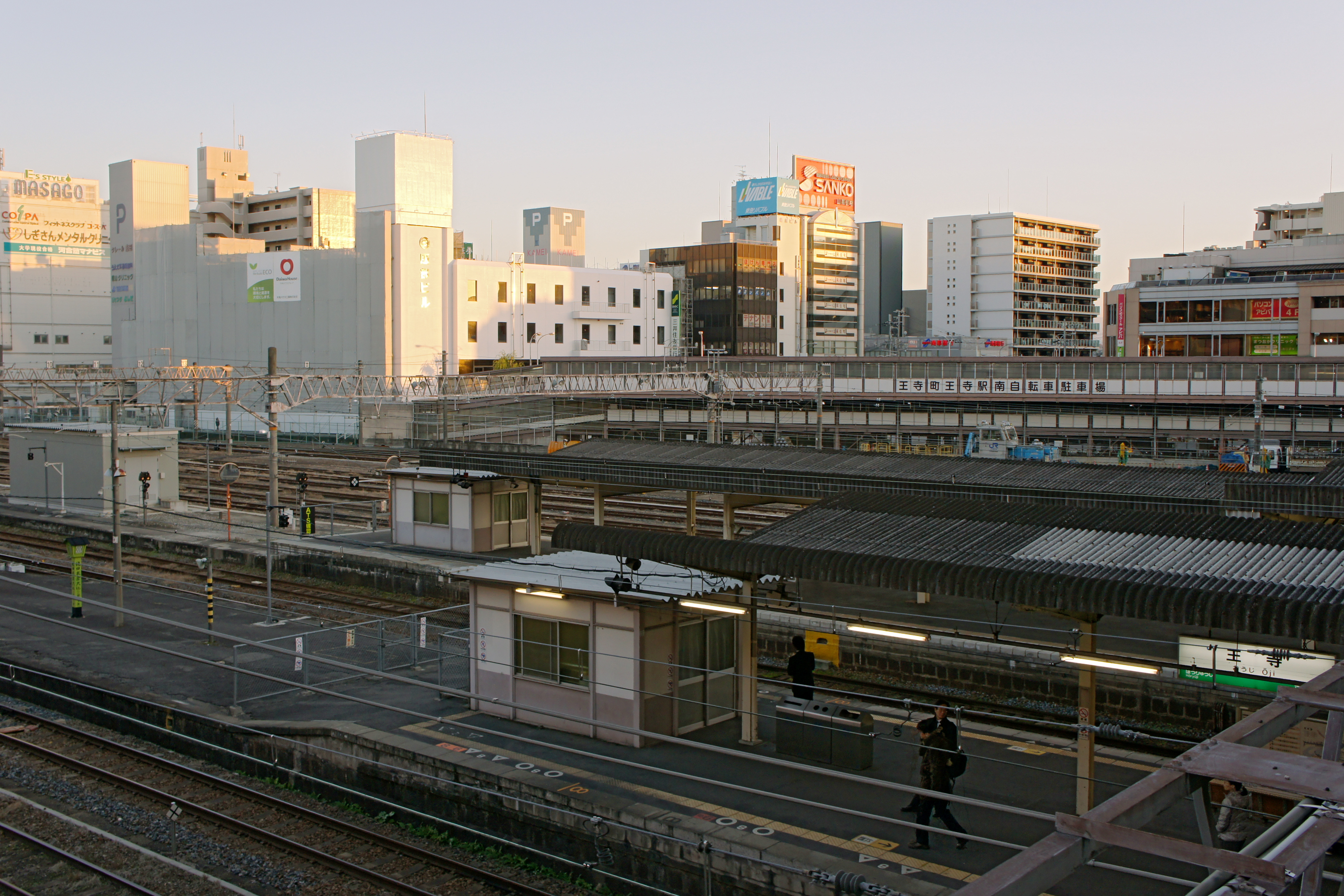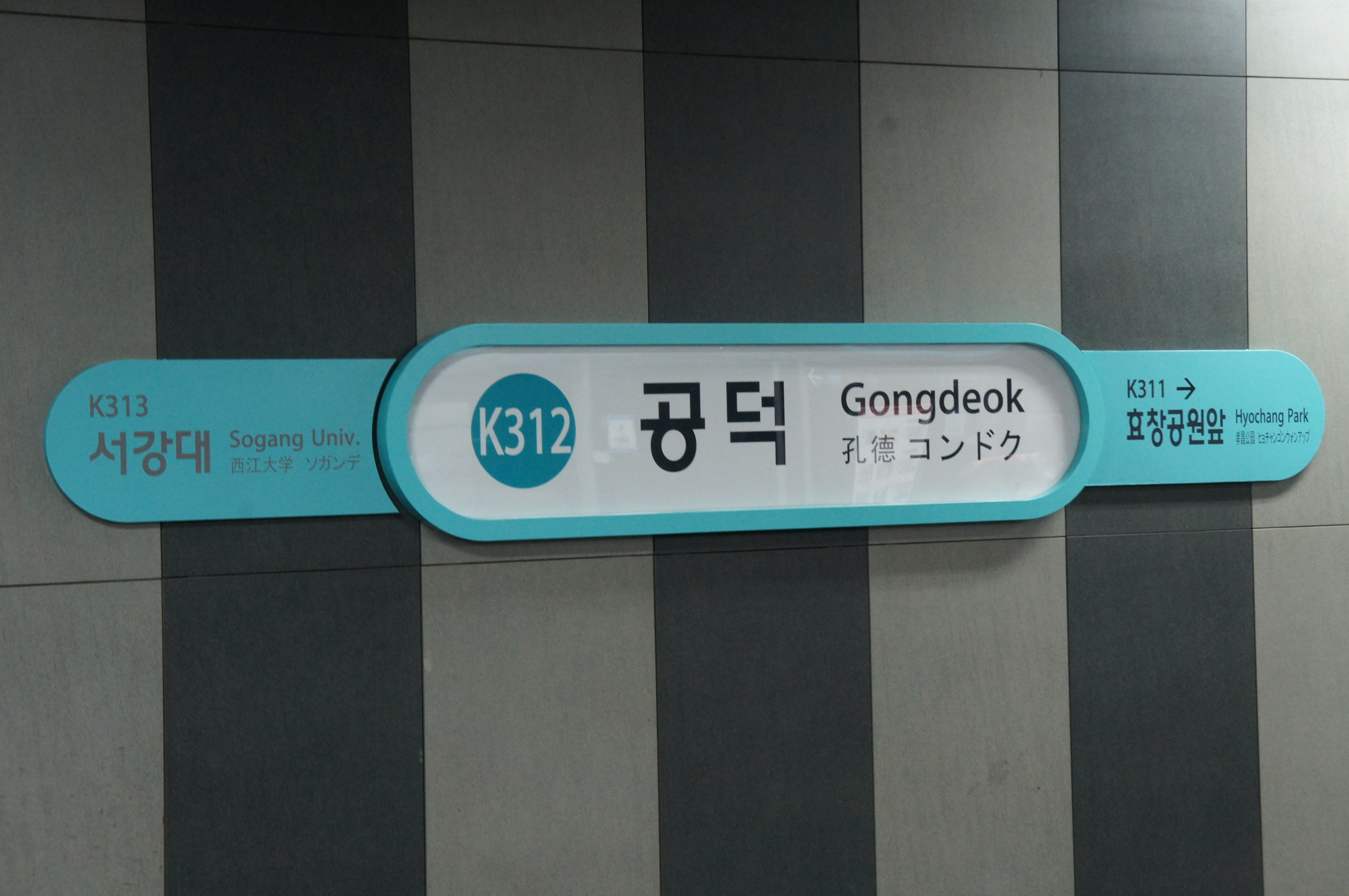|
Kōriyama Station (Nara)
is a passenger railway station located in the city of Yamatokōriyama, Nara, Japan. It is operated by West Japan Railway Company (JR West) and is administrated by Ōji Station.. Lines The station is served by the Kansai Main Line (Yamatoji Line) and is 17.8 kilometers from the starting point of the line at and 138.7 kilometers from . Layout Kōriyama Station is an above-ground station with two side platforms, connected by an elevated station building, the exterior of which is modeled after Kōriyama Castle. The station has a ''Midori no Madoguchi'' staffed ticket office. Layout Kōriyama Station (Nara) ticket gate.jpg, Ticket gate JRW 221 Yamatoji Rapid at Koriyama Station 20110409 (8406715699).jpg, Platforms History The station was opened on December 27, 1890 on the Osaka Railway between and . The Osaka Railway was nationalized in 1907 and the line was renamed the Kansai Main Line in 1909. With the privatization of the Japan National Railways (JNR) on ... [...More Info...] [...Related Items...] OR: [Wikipedia] [Google] [Baidu] |
Railway Station
Rail transport (also known as train transport) is a means of transport using wheeled vehicles running in railway track, tracks, which usually consist of two parallel steel railway track, rails. Rail transport is one of the two primary means of land transport, next to road transport. It is used for about 8% of passenger and rail freight transport, freight transport globally, thanks to its Energy efficiency in transport, energy efficiency and potentially high-speed rail, high speed.Rolling stock on rails generally encounters lower friction, frictional resistance than rubber-tyred road vehicles, allowing rail cars to be coupled into longer trains. Power is usually provided by Diesel locomotive, diesel or Electric locomotive, electric locomotives. While railway transport is capital intensity, capital-intensive and less flexible than road transport, it can carry heavy loads of passengers and cargo with greater energy efficiency and safety. Precursors of railways driven by human or an ... [...More Info...] [...Related Items...] OR: [Wikipedia] [Google] [Baidu] |
Yamatokōriyama
280px, Kōriyama Castle is a city in Nara Prefecture, Japan. , the city had an estimated population of 82,731 in 39,628 households, and a population density of 1,900 persons per km2. The total area of the city is . Geography Yamatokōriyama is located in the northern part of the Nara Basin, with the and the flowing through the city from north-to-south and merging into the Yamato River that flows westwards towards Osaka. The city area is mostly flat, but west of the Tomio River the Yata Hills make the land more undulating. There are also many ponds within the city, which were traditionally used as irrigation reservoirs or goldfish farms. Neighboring municipalities Nara Prefecture * Ando * Ikaruga * Ikoma * Kawanishi * Nara * Tenri Climate Yamatokōriyama has a humid subtropical climate (Köppen ''Cfa'') characterized by warm summers and cool winters with light to no snowfall. The average annual temperature in Yamatokōriyama is 14.1 °C. The average annual rainfall i ... [...More Info...] [...Related Items...] OR: [Wikipedia] [Google] [Baidu] |
Nara Prefecture
is a Prefectures of Japan, prefecture of Japan located in the Kansai region of Honshu. Nara Prefecture has a population of 1,321,805 and has a geographic area of . Nara Prefecture borders Kyoto Prefecture to the north, Osaka Prefecture to the northwest, Wakayama Prefecture to the southwest, and Mie Prefecture to the east. Nara (city), Nara is the capital and largest city of Nara Prefecture, with other major cities including Kashihara, Nara, Kashihara, Ikoma, Nara, Ikoma, and Yamatokōriyama. Nara Prefecture is located in the center of the Kii Peninsula on Japan's Pacific Ocean coast, and is one of only eight landlocked prefectures. Nara Prefecture has the distinction of having more UNESCO World Heritage listings than any other prefecture in Japan. History The Nara Prefecture region is considered one of the oldest regions in Japan, having been in existence for thousands of years, and is widely viewed as the Japanese cradle of civilization. Like Kyoto, Nara was one of Imperial ... [...More Info...] [...Related Items...] OR: [Wikipedia] [Google] [Baidu] |
West Japan Railway Company
, also referred to as , is one of the Japan Railways Group (JR Group) companies and operates in western Honshu. It has its headquarters in Kita-ku, Osaka. It is listed in the Tokyo Stock Exchange, is a constituent of the TOPIX Large70 index, and is also one of only three Japan Railways Group constituents of the Nikkei 225 index: the others are JR East and JR Central. It was also listed in the Nagoya and Fukuoka stock exchanges until late 2020. Lines Shinkansen * Hokuriku Shinkansen ( - ) * San'yō Shinkansen * Hakata Minami Line :: Officially not a Shinkansen JR-West's highest-grossing line is the Sanyo Shinkansen high-speed rail line between Osaka and Fukuoka. The Sanyo Shinkansen alone accounts for about 40% of JR-West's passenger revenues. The company also operates Hakata Minami Line, a short commuter line with Shinkansen trains in Fukuoka. Urban Network The "Urban Network" is JR-West's name for its commuter rail lines in the Osaka-Kobe-Kyoto metropolitan are ... [...More Info...] [...Related Items...] OR: [Wikipedia] [Google] [Baidu] |
Ōji Station (Nara)
is a railway station in Ōji, Nara, Japan. Operated by West Japan Railway Company (JR-West) and Kintetsu Railway, it is one of the four oldest railway stations in Nara Prefecture, and forms a major junction in the region. The station serves the Yamatoji Line (Kansai Main Line), and is the terminus for the Wakayama Line and Kintetsu Ikoma Line. Kintetsu's station has a stationmaster who administrates between Motosanjoguchi Station and the station on the Ikoma Line and all stations on the Tawaramoto Line. The nearby is also the terminus for Kintetsu Tawaramoto Line. Station layout JR-West platforms and tracks The JR West station has one side platform and two island platforms, serving five tracks at ground level. Kintetsu Railway platform and tracks The Kintetsu station consists of a bay platform serving two tracks at ground level. Shin-Ōji Station Platforms and track The station consists of two bay platforms serving a single track at ground level. The north p ... [...More Info...] [...Related Items...] OR: [Wikipedia] [Google] [Baidu] |
Kansai Main Line
The is a railway line in Japan, which connects Nagoya Station with JR Namba Station in Osaka. It is jointly run by the Central Japan Railway Company (JR Central) and West Japan Railway Company (JR West), with the boundary between both companies being located at Kameyama Station (Mie), Kameyama Station in Kameyama, Mie. The section from Kamo Station (Kyoto), Kamo Station west to JR Namba Station is electrified and a part of the JR West "Urban Network", and is nicknamed the Yamatoji Line. The JR Central section from Nagoya to Kameyama is also electrified. Despite its name, for much of its length it is a very local line with mainly single track sections and no regular express services. The line was originally built in the 1890s by Kansai Railway (later under the Japanese Government Railways and Japanese National Railways) as an alternate route from south Osaka to Nara and Nagoya, but competition from the Kintetsu Railway, Kintetsu lines and declining ridership forced the line t ... [...More Info...] [...Related Items...] OR: [Wikipedia] [Google] [Baidu] |
Yamatoji Line
The is the common name of the western portion of the Kansai Main Line in Japan. The line is owned and operated by West Japan Railway Company (JR West). It starts at Kamo Station (Kyoto), Kamo Station in Kyoto Prefecture and ends at JR Namba Station in Naniwa-ku, Osaka. Operations Yamatoji Rapid Service : trains operate between or Nara Station and Tennoji Station, Tennoji, via a complete loop on the Osaka Loop Line. Trains divert from the Kansai Line at Shin-Imamiya Station instead of continuing to JR Namba. From Shin-Imamiya, they run on the Osaka Loop Line, making limited stops to Osaka Station, and then making every stop before completing the loop at Tennoji Station. However, some services do not complete the loop, as they terminate in Kyobashi. Trains also stop at every station east of . :4 services are operated every hour during weekday daytime and weekend nighttime, with 2 of them operating as far as . Some weekend services operate through service to the Wakayama Line t ... [...More Info...] [...Related Items...] OR: [Wikipedia] [Google] [Baidu] |
Side Platform
A side platform (also known as a marginal platform or a single-face platform) is a platform positioned to the side of one or more railway tracks or guideways at a railway station, tram stop, or transitway. A station having dual side platforms, one for each direction of travel, is the basic design used for double-track railway lines (as opposed to, for instance, the island platform where a single platform lies between the tracks). Side platforms may result in a wider overall footprint for the station compared with an island platform, where a single width of platform can be shared by riders using either track. In some stations, the two side platforms are connected by a footbridge or tunnel to allow safe access to the alternate platform. While a pair of side platforms is often provided on a dual-track line, a single side platform is usually sufficient (trains are usually only boarded from one side) for a single-track line. Layout Where the station is close to a level crossing (g ... [...More Info...] [...Related Items...] OR: [Wikipedia] [Google] [Baidu] |
Kōriyama Castle
270px, reconstructed Ote-mon is a ''flatlands''-style Japanese castle located in the city of Yamatokōriyama, Nara Prefecture, Japan. Its ruins have been protected as a National Historic Site since 2023. It is No.194 on the list " Continued 100 Fine Castles of Japan". Overview Kōriyama Castle is located at the center of the Nara Basin on the southern end of the Saikyo Hills, on a peninsula protected by the Akishino and Tomio Rivers. The site appears to have been a physic garden in the Nara period, and the first record of a fortification dates from the late 10th century. During the Sengoku period, it was extensively remodeled by Tsutsui Junkei (1549-1584), a local petty warlord who had previously been a general commanding the ''sōhei'' (armed monks) of Kofuku-ji. The clan controlled central Yamato Province, but were defeated by Matsunaga Hisahide. Kōriyama Castle was taken by Matsunaga Hisahide, but was soon recovered by Tsutsui Junkei. After Matsunaga Hisahide failed rebe ... [...More Info...] [...Related Items...] OR: [Wikipedia] [Google] [Baidu] |
Midori No Madoguchi
, short for ''Magnetic-electronic Automatic'' ''Reservation System,'' is a train ticket reservation system used by the Japan Railways Group (JR Group) companies and travel agencies in Japan. It was developed jointly by Hitachi and the former Japanese National Railways (JNR), and inherited by the (JR Systems), which is jointly owned by the seven railway companies of the JR Group: the East Japan Railway Company (JR East), Central Japan Railway Company (JR Central), West Japan Railway Company (JR West), Hokkaido Railway Company (JR Hokkaido), Shikoku Railway Company (JR Shikoku), Kyushu Railway Company (JR Kyushu), and Japan Freight Railway Company (JR Freight). The MARS system used in JR ticket offices is Japan’s largest online real-time system, providing a year-round availability of 99.999%. It offers a range of services, including seat reservations on Shinkansen and Limited Express trains and fare calculation for basic fare tickets, commuter passes, and express tickets. ... [...More Info...] [...Related Items...] OR: [Wikipedia] [Google] [Baidu] |
Japan National Railways
The , abbreviated JNR or , was the business entity that operated Japan's national railway network from 1949 to 1987. Network Railways As of June 1, 1949, the date of establishment of JNR, it operated of narrow gauge () railways in all 46 prefectures of Japan. This figure expanded to in 1981 (excluding Shinkansen), but later reduced to as of March 31, 1987, the last day of JNR. JNR operated both passenger and freight services. Shinkansen Shinkansen, the world's first high-speed railway was debuted by JNR in 1964. By the end of JNR in 1987, four lines had been constructed: ; Tōkaidō Shinkansen: , completed in 1964 ; Sanyō Shinkansen: , completed in 1975 ; Tōhoku Shinkansen: , as of 1987 ; Jōetsu Shinkansen: , completed in 1982 Buses JNR operated bus lines as feeders, supplements or substitutions of railways. The JR Bus companies are the successors of the bus operation of JNR. Ships JNR operated ferries to connect railway networks separated by sea or to meet ... [...More Info...] [...Related Items...] OR: [Wikipedia] [Google] [Baidu] |
Station Numbering
Station numbering is a sign system which assigns station codes consisting of a few letters and numbers to train stations. It aims to facilitate navigation for foreign travelers not familiar with the local language by using globally understood characters ( Latin letters and Arabic numbers). The system is now in use by various railway companies around the world such as in mainland China, Indonesia, Japan, South Korea, Singapore, Taiwan, Thailand, and the United States. History Station numbering was first introduced—but to less fanfare—in South Korea, by the Seoul Metropolitan Subway in 1983 as a section of Seoul Subway Line 2 ( Euljiro 1-ga to Seongsu) was opened. Its first usage in Japan was in the Nagasaki Electric Tramway where it was introduced in May 1984."History of Nagasaki Electric Tramway line transition", ''Stadtbahn'' issue 9, April 1984 The Tokyo subway system introduced station numbering in 2004. Sports events are usually the turning point for the introduct ... [...More Info...] [...Related Items...] OR: [Wikipedia] [Google] [Baidu] |





